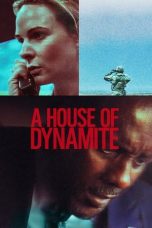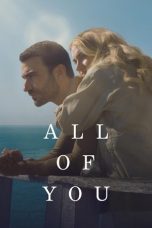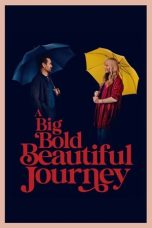Rome Open City (1945) – A Groundbreaking Neorealist Masterpiece
“Rome Open City” (Italian: “Roma città aperta”), directed by Roberto Rossellini and released in 1945, stands as a seminal work in the history of cinema, marking the emergence of the Italian Neorealism movement. This film, shot in the immediate aftermath of World War II, presents a gritty and authentic portrayal of life under Nazi occupation in Rome. Celebrated for its raw realism and emotional depth, “Rome Open City” remains a powerful testament to the resilience and spirit of the human condition. The film is available for streaming on platforms such as Criterion Channel and HBO Max, and for rental or purchase on services like Amazon Prime Video, Google Play, and iTunes.
Plot Summary
Set in 1944, during the final years of World War II, “Rome Open City” follows the intersecting lives of several characters living under Nazi occupation in Rome. The central narrative revolves around Giorgio Manfredi (Marcello Pagliero), a leader of the Italian Resistance, who is being hunted by the Gestapo. He seeks refuge with his friend Francesco (Francesco Grandjacquet) and Pina (Anna Magnani), Francesco’s fiancée. Pina is a strong-willed woman expecting a child, whose life is tragically affected by the brutalities of the occupation. The film also follows Don Pietro Pellegrini (Aldo Fabrizi), a courageous priest who aids the resistance fighters. The intertwining stories of these characters paint a harrowing picture of the struggle, sacrifice, and resilience of the Italian people during this tumultuous period.
Themes and Motifs
“Rome Open City” delves deeply into themes of resistance, sacrifice, and the moral complexities of war. The film highlights the collective struggle of ordinary people against oppression and the harsh realities of life under occupation. Themes of faith, both religious and ideological, are central to the narrative, with characters like Don Pietro embodying moral conviction and courage. The motif of the city itself, as an open yet besieged space, underscores the vulnerability and defiance of its inhabitants. The film’s portrayal of human suffering and resilience serves as a powerful reminder of the enduring spirit of those who resist tyranny.
Cinematography and Direction
Roberto Rossellini’s direction in “Rome Open City” is marked by a stark, documentary-like realism that captures the immediacy and urgency of the time. Shot on location in the war-torn streets of Rome with non-professional actors alongside seasoned performers, the film’s visual style is raw and unpolished, enhancing its authenticity. The use of natural lighting and hand-held cameras contributes to the film’s visceral and immersive quality. Rossellini’s approach broke away from the polished, studio-bound aesthetics of pre-war Italian cinema, laying the groundwork for the Neorealist movement.
Performances
The performances in “Rome Open City” are powerful and evocative, with Anna Magnani and Aldo Fabrizi delivering standout portrayals. Magnani’s portrayal of Pina is raw and heartbreaking, capturing the character’s strength and vulnerability. Her performance in the film’s most iconic scene, where she runs after a truck carrying her fiancé, remains one of the most memorable moments in cinema history. Fabrizi’s depiction of Don Pietro is equally compelling, embodying compassion and quiet heroism. The supporting cast, including Marcello Pagliero as the steadfast resistance leader Giorgio, further enriches the film’s emotional and narrative depth.
Critical Reception
“Rome Open City” received widespread acclaim upon its release and has since been hailed as a landmark in film history. It holds high ratings on Rotten Tomatoes and Metacritic, with critics praising its emotional intensity, realistic portrayal of wartime hardships, and innovative cinematography. The film won several awards, including the Grand Prize at the 1946 Cannes Film Festival, solidifying its status as a critical and cultural milestone. Its impact on subsequent filmmakers and the evolution of cinematic language cannot be overstated.
Streaming and Availability
For those eager to experience the groundbreaking impact of “Rome Open City,” the film is available on several streaming platforms. Subscribers to the Criterion Channel and HBO Max can stream the film as part of their subscriptions. Additionally, it is available for rental or purchase on Amazon Prime Video, Google Play, and iTunes, ensuring that viewers have multiple options to access this historic and influential work.
Conclusion
In conclusion, “Rome Open City” is a profoundly moving and historically significant film that continues to resonate with audiences today. Its unflinching portrayal of life under Nazi occupation, combined with its innovative cinematic techniques, makes it a cornerstone of the Italian Neorealism movement and a must-see for anyone interested in the power of cinema to capture the human experience. Whether you are a film history enthusiast or a casual viewer, “Rome Open City” offers a raw and compelling look at the resilience and courage of ordinary people in extraordinary times.
















